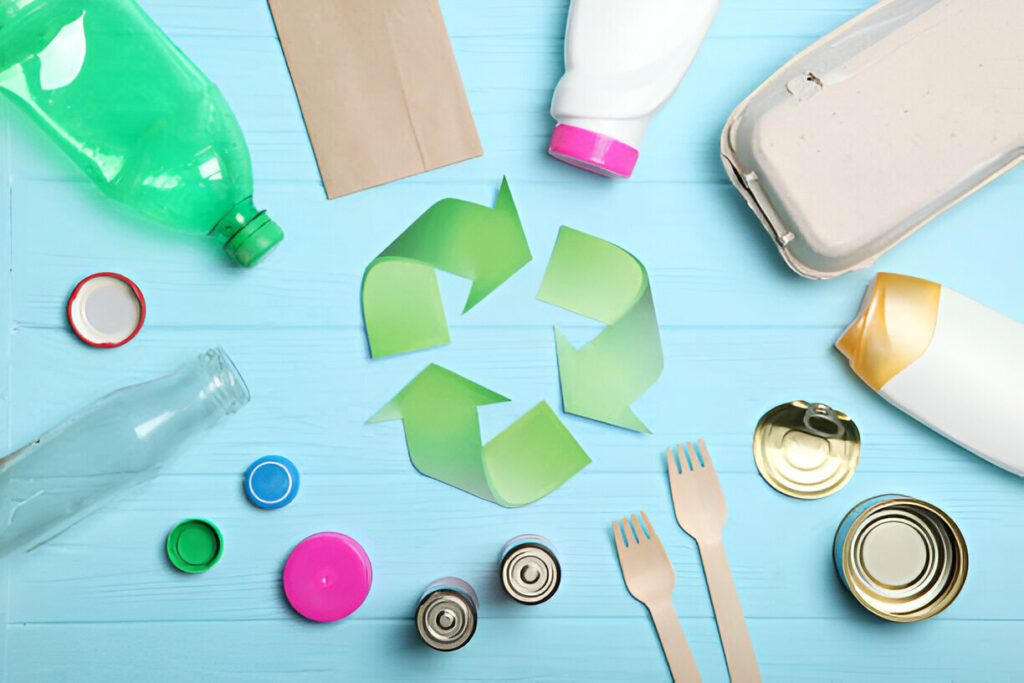In an era where sustainability is increasingly important, making the switch from single-use items to reusable products is a straightforward and effective way to reduce waste and minimize our environmental footprint. Single-use items, such as plastic bags, water bottles, and disposable cutlery, contribute significantly to pollution and resource depletion. By choosing reusable alternatives, we can play a crucial role in protecting the planet.
Understanding the Impact of Single-Use Items
Single-use items are designed to be used once and then discarded. This linear consumption model leads to a multitude of environmental problems:
- Plastic Pollution: Plastic items often end up in landfills or oceans, harming wildlife and ecosystems.
- Resource Depletion: The production of single-use items requires substantial amounts of raw materials and energy, contributing to the depletion of natural resources.
- Waste Generation: The sheer volume of single-use waste strains waste management systems and contributes to litter and landfill overflow.
Categories of Single-Use Items and Their Reusable Alternatives
1. Food and Beverage Containers
- Reusable Water Bottles: Opt for stainless steel or BPA-free plastic bottles to reduce plastic waste.
- Coffee Cups: Use travel mugs made from materials like glass, stainless steel, or silicone.
- Lunch Boxes and Food Containers: Choose durable containers made from stainless steel, glass, or food-grade plastics.
- Bee’s Wrap or Silicone Food Covers: These are eco-friendly alternatives to plastic wrap for covering bowls and storing food.
2. Bathroom Essentials
- Reusable Makeup Remover Pads: Cloth pads that can be washed and reused multiple times.
- Safety Razors: Stainless steel razors that allow you to replace just the blade, reducing waste compared to disposable razors.
- Bamboo Toothbrushes: Toothbrushes with biodegradable bamboo handles and BPA-free bristles.
3. Household Items
- Cloth Napkins: Reusable napkins that can be washed and used repeatedly.
- Reusable Grocery Bags: Durable shopping bags made from materials like canvas, jute, or recycled plastic.
- Silicone or Beeswax Food Wraps: Reusable wraps that can be used to cover bowls or wrap food items.
4. Personal Care
- Menstrual Cups: A silicone or rubber cup that is inserted into the vagina to collect menstrual blood.
- Shampoo Bars and Soap: Solid products that eliminate the need for plastic bottles.
- Safety Razors: As mentioned in bathroom essentials, these are ideal for shaving.
5. Office Supplies
- Reusable Pens and Pencils: Pens with refills or mechanical pencils that don’t require frequent replacement.
- Metal Straws: Reusable straws that can be used instead of single-use plastic straws.
- E-Books and Digital Documents: Reducing the need for printed materials.
Product Recommendations
- Reusable Water Bottles: Hydro Flask, S’well, Klean Kanteen.
- Coffee Cups: KeepCup, Stojo, FinalStraw Travel Cup.
- Lunch Boxes: Laptop Lunches, Bentgo, Planetbox.
- Safety Razors: Bond No. 9, Merkur, ShugaGrowth.
- Bamboo Toothbrushes: Bamboovilla, The Humble Co., Brush with Bamboo.
- Menstrual Cups: DivaCup, Lena Cup, Saalt Cup.
- Silicone Food Covers: Stasher, Bee’s Wrap, ReZip.
Benefits of Reusable Products
- Cost Savings: Although reusable products may have a higher upfront cost, they save money in the long run by eliminating the need to constantly repurchase single-use items.
- Durability: Reusable products are built to last, often coming with warranties and longer lifespans.
- Reduced Waste: By reducing the amount of waste sent to landfills, reusable products help conserve natural resources and minimize pollution.
- Health Benefits: Many reusable products are free from harmful chemicals found in some single-use items, promoting better health for users.
Overcoming Common Barriers
- Initial Cost: While reusable products might cost more initially, they save money over time due to their longevity.
- Convenience: Carrying a reusable water bottle or coffee cup may require a bit more planning, but it becomes second nature with time.
- Cleanliness: Regular cleaning and proper maintenance ensure that reusable products remain hygienic and safe to use.
Personal Success Stories
Many individuals have successfully transitioned to reusable products and have seen both environmental and personal benefits. For example, Sarah, a mother of two, switched to reusable food containers and cloth napkins, which not only reduced her household waste but also saved her money on disposable products. Similarly, John, an office worker, started using a refillable pen and switched to e-books, reducing paper usage and saving trees.
Collective Impact
While individual actions may seem small, collectively they can lead to significant positive change. By making the switch to reusable products, you join a global movement towards more sustainable living practices.
Conclusion
Making the switch from single-use items to reusable products is a simple yet effective way to reduce waste and promote sustainability. By choosing durable, eco-friendly alternatives, you can contribute to a healthier planet while also saving money and enjoying the benefits of higher-quality products. Start by identifying the single-use items you use most frequently and look for suitable reusable replacements. Remember, every small step counts, and together, we can create a more sustainable future.


